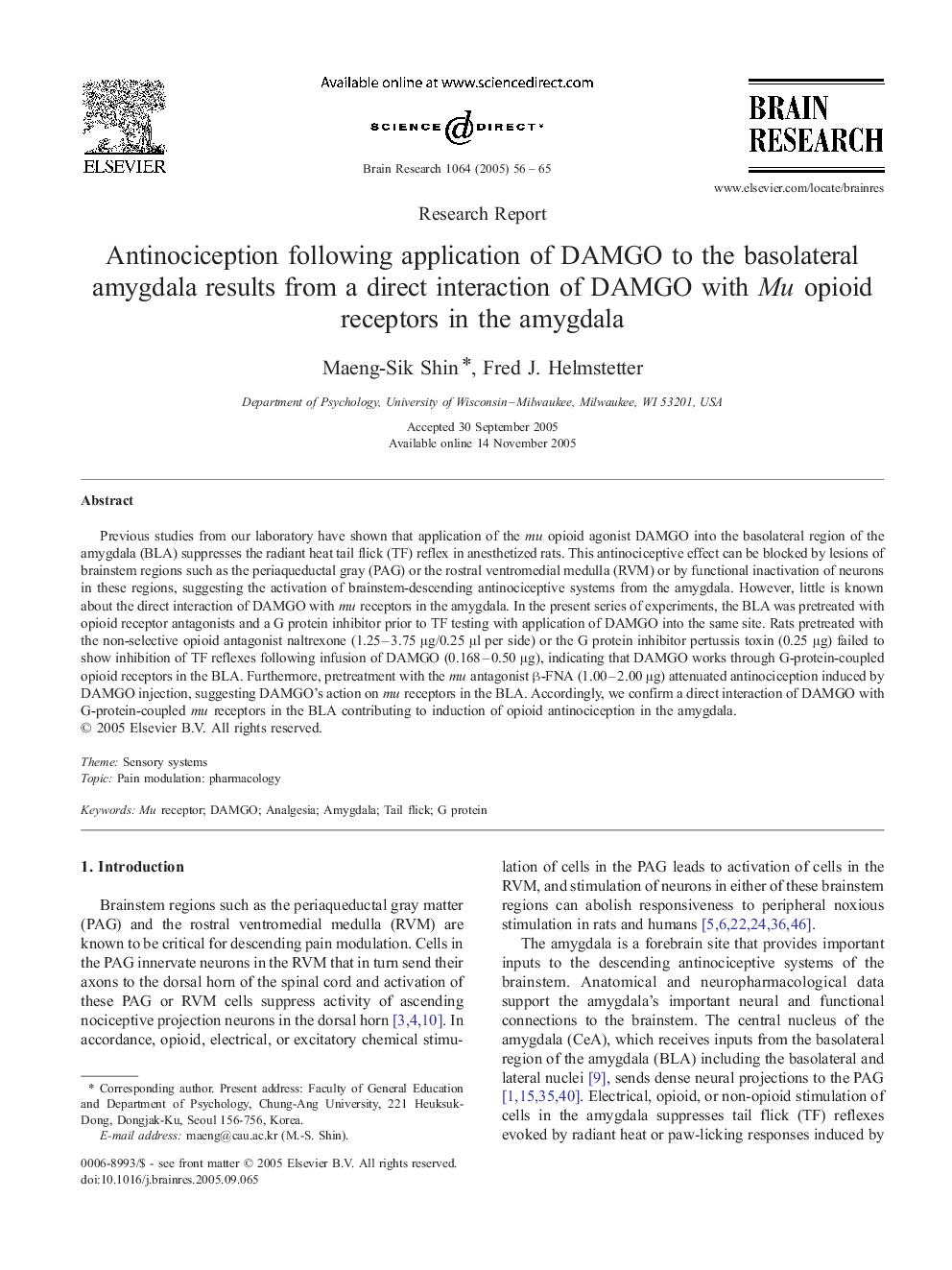| Article ID | Journal | Published Year | Pages | File Type |
|---|---|---|---|---|
| 9415673 | Brain Research | 2005 | 10 Pages |
Abstract
Previous studies from our laboratory have shown that application of the mu opioid agonist DAMGO into the basolateral region of the amygdala (BLA) suppresses the radiant heat tail flick (TF) reflex in anesthetized rats. This antinociceptive effect can be blocked by lesions of brainstem regions such as the periaqueductal gray (PAG) or the rostral ventromedial medulla (RVM) or by functional inactivation of neurons in these regions, suggesting the activation of brainstem-descending antinociceptive systems from the amygdala. However, little is known about the direct interaction of DAMGO with mu receptors in the amygdala. In the present series of experiments, the BLA was pretreated with opioid receptor antagonists and a G protein inhibitor prior to TF testing with application of DAMGO into the same site. Rats pretreated with the non-selective opioid antagonist naltrexone (1.25-3.75 μg/0.25 μl per side) or the G protein inhibitor pertussis toxin (0.25 μg) failed to show inhibition of TF reflexes following infusion of DAMGO (0.168-0.50 μg), indicating that DAMGO works through G-protein-coupled opioid receptors in the BLA. Furthermore, pretreatment with the mu antagonist β-FNA (1.00-2.00 μg) attenuated antinociception induced by DAMGO injection, suggesting DAMGO's action on mu receptors in the BLA. Accordingly, we confirm a direct interaction of DAMGO with G-protein-coupled mu receptors in the BLA contributing to induction of opioid antinociception in the amygdala.
Keywords
Related Topics
Life Sciences
Neuroscience
Neuroscience (General)
Authors
Maeng-Sik Shin, Fred J. Helmstetter,
